Date: August 16, 2025
Venue: Online
Watch the recordings HERE and HERE.
To celebrate Sri Aurobindo’s birthday and Sri Krishna Janmashtami, BhāratShakti organised an online satsang on Saturday, August 16, 2025. The programme included a few short talks (in English and Hindi) highlighting a few aspects of Sri Aurobindo’s and Sri Krishna’s Divine Personalities and Divine Works, as well as musical offerings to express our love and devotion for them.
More than 40 people from different parts of the country joined the 2-hour-long webinar. The programme began with a beautiful musical rendition by Smt Shantha Rajan, M. Phil (Econ), Alumni of SACAR for Sri Aurobindo Studies and an accomplished musician in Carnatic Classical music. For her performance that day, she combined two compositions viz., Govinda Ashtakam and a Tarangini on Sri Narayana.
The first speaker Dr. Charan Singh Kedarkhandi spoke in Hindi on the topic of “Sri Aurobindo ki drishti mein mera Bharat”. He began by saying that the soul of India has been expressed in Sanskrit and the youth of the nation should imbibe the knowledge of Sanskrit to establish a connection with their roots. He emphasised that Sri Aurobindo always insisted that India is not a geographical entity but is a living Shakti. Sri Aurobindo spoke about Swaraj at a time when no one had even thought about it. Reminding everyone of Sri Aurobindo’s words that “one day of slavery robs a man of half his manhood”, Dr. Kedarkhandi asked the audience to speculate as to what a 1000-year subjugation must have done to the consciousness of the nation.
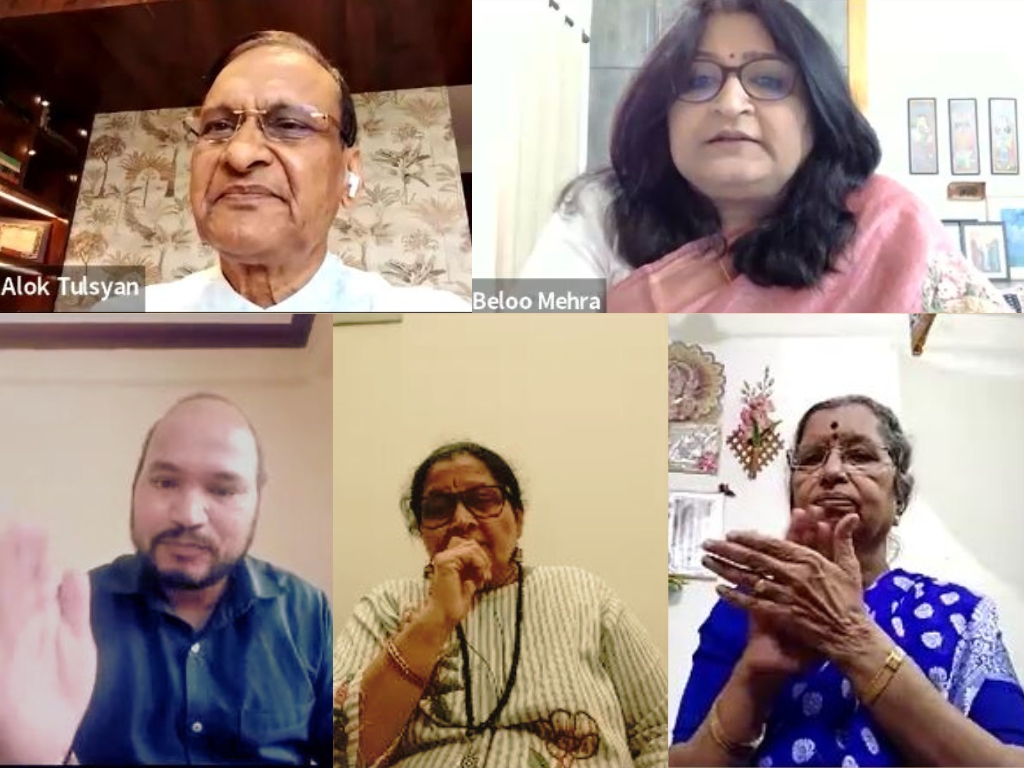
We have to carry forward the mission of becoming a “Vishvaguru” and “Vikasit Bharat” not by imitating the Western nations but by following our own ideals rooted in our culture and tradition. Dr. Kedarkhandi emphasised that Yoga and Spirituality are the two essential building blocks on which we have to build a new India as envisioned by Sri Aurobindo. And for that the essential conditions are knowing about our glorious heritage and cultivating a sense of inner swaraj or mastery which we lack even today.
He stressed on the point that we do not become Indians merely by living in India but by how much of India is living within us. And that is where the question of building the Aryan character comes in as expressed in Sri Aurobindo’s writings. For that we have to imbibe the knowledge and spirit of Vedanta/Upanishads and the Gita in us. Because the “inner slavery” still persists. He stressed on the capacity for thought which is sadly lacking in contemporary society. He concluded by saying that we should open ourselves to light from all directions but at the same taking care to synthesize the same with our innate Swabhava and Swadharma from which is derived our cultural ethos. Dr. Kedarkhandi added that Sri Aurobindo’s love and vision for our nation must always serve as our guide.
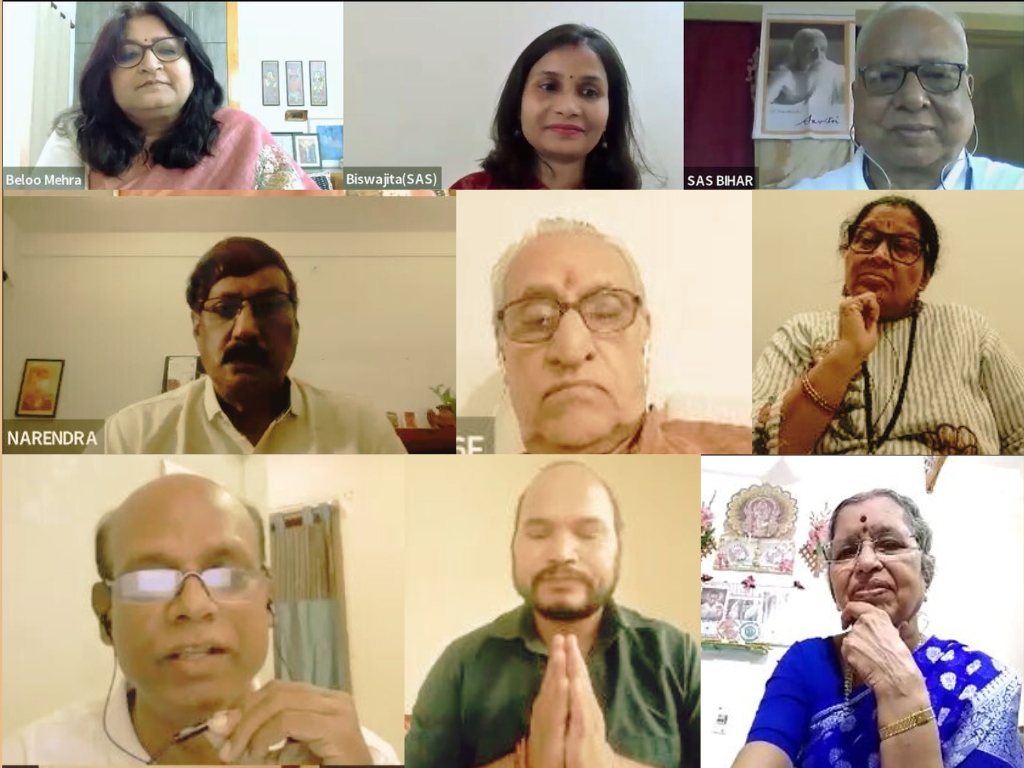
Thereafter, Dr. Beloo Mehra spoke on the topic, “Sri Aurobindo and Sri Krishna: From Presidency Jail to Pondicherry.” She began by speaking about her visit to the prison cell in Calcutta where Aurobindo Ghose was imprisoned for a year, where he had great transformative experiences that were to change the course of his life to transform him into Sri Aurobindo. It was in Presidency Jail that the guidance of the Gita was given to him by Krishna himself. He received further guidance from Swami Vivekananda on the lines of Sadhana that he had to pursue.
Dr. Mehra brought out that there were two distinct phases in Sri Aurobindo’s writing – one before his imprisonment and one after his acquittal and release. In Bande Mataram and Yugantar if he gave the call for Purna Swaraj and awakened the Indian mind to the need for freedom, later on in Karmayogin and Dharma he laid out the road map for the future of India post-Independence. Dr. Mehra briefly described the experience of cosmic consciousness that Sri Aurobindo had in the prison which he described in vivid details in his famous Uttarpara speech. She read out selected passages where Sri Aurobindo describes the guidance that he received from Sri Krishna regarding the mission and work that he had to perform according to the Divine will. She interwove this part of her talk with a short account of her visit to the cell, the silence that pervaded there, and shared her intimate personal thoughts and emotions that flooded her in the sacred space of the cell.
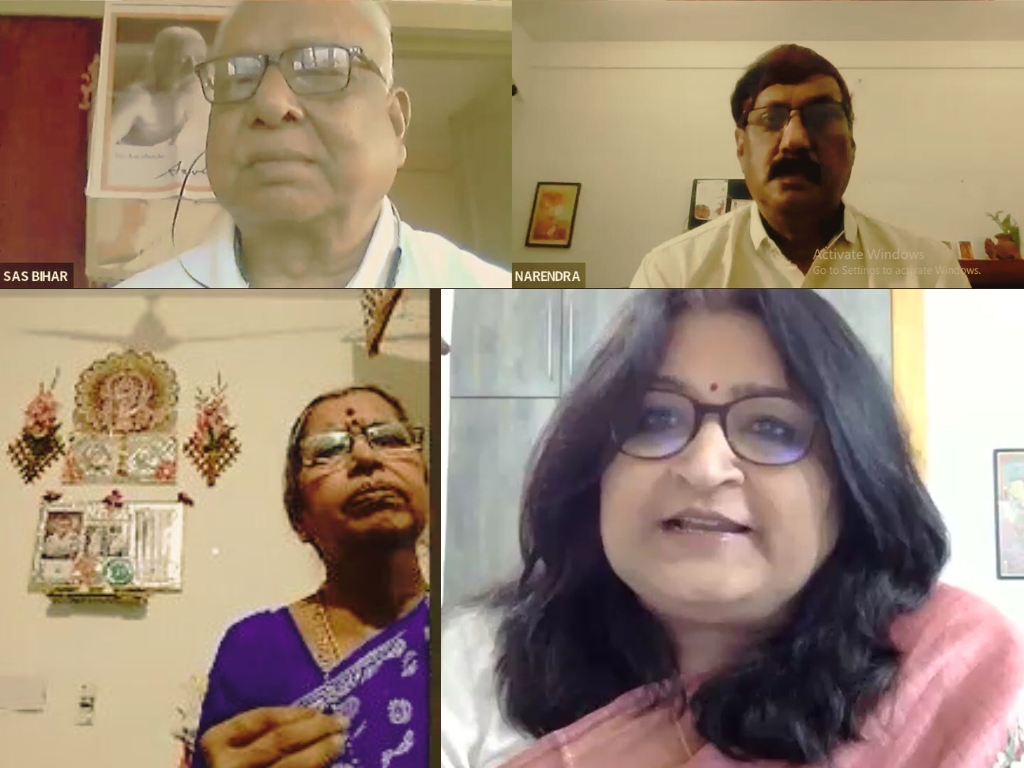
Thereafter, Dr. Mehra talked about the event of November 24, 1926, when Sri Krishna descended into the physical – a Siddhi that is explained as the Descent of the Overmind Godhead. Briefly describing the significance of this siddhi, after which Sri Aurobindo withdrew from public life, she highlighted what this descent of Sri Krishna into body of Sri Aurobindo and the perfection of the Overmind realisation meant in terms of paving the way for the Supramental descent.
Thereafter, Dr. Mehra read out some significant passages from the Mother’s conversations about the meaning and significance of Siddhi day. It was highlighted that the significance of this Siddhi was for Creation, and it was an Avatar of the past consenting to take part in the present so that a way can be forged by an Avatar of the Future for a new creation. Dr. Mehra also shared a few of Sri Aurobindo’s words about his complete identification with Sri Krishna in his various letters to his disciples where he describes Krishna as his “double”. She ended with a quote by Sri Aurobindo where he said that his identification with Krishna was a matter of “daily and hourly realization and intimate to the stuff of my consciousness.”
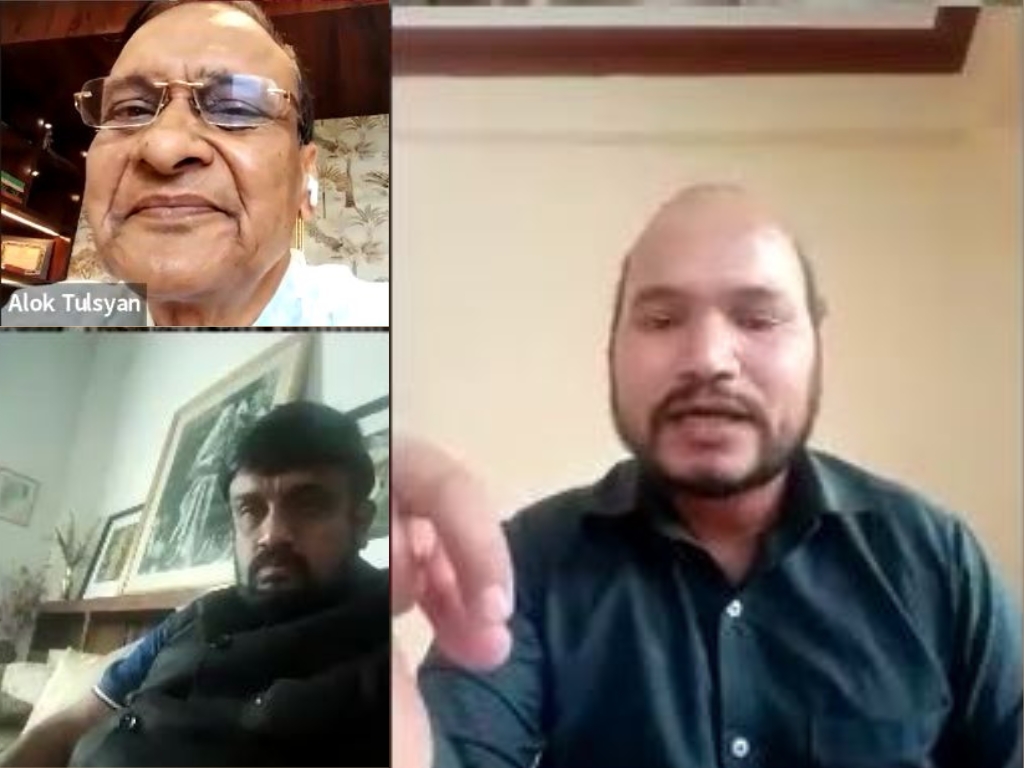
The last speaker Mr. Narendra Murty spoke on the topic, “The Three Ways of the Lord.” He began by saying that Sri Krishna was a glorious Trinity of Power, Knowledge and Love, the Almighty, All-Knowing and All-Loving godhead. Accordingly Krishna demonstrated the three paths of Bhakti Yoga, Karma Yoga and Jnana Yoga in three distinct phases of his life — Love/Bhakti in the Vraja/Vrindavan phase, Power/Karma in the Mathura/Dwaraka phase and finally Knowledge/Jnana in the battlefield of Kurukshetra and in his final message to his disciple Uddhava.
In the Vrindavan Lila, Sri Krishna taught the intoxication of love for the Divine and through the music of his flute which symbolically is the call of the Divine he attracted all towards himself. He talked about the love for the Gopis for Krishna and the significance of Rasa Lila which again symbolically represented the union of Prakriti and Purusha or the Jivatman with Paramatman. He cited anecdotes and a couple of lines from a Tagore poem which brought out the essence of Bhakti Rasa.
In the Mathura and Dwaraka phase, Krishna demonstrated the path of Karma Yoga where he worked tirelessly for the destruction of the evil, protection of the good, Loksangraha (greater good) and Dharma samsthapana – whether it was the killing of Kamsa, Jarasandha, Shishupal or the destruction of the Kuru clan. And the ultimate display of his Power aspect was in the battlefield of Kurukshetra as the Vishvaroopa. And finally, Krishna showed himself as the ultimate teacher, a Jagadguru as the giver of the Bhagavad Gita and the Uddhava Gita in his Knowledge aspect.
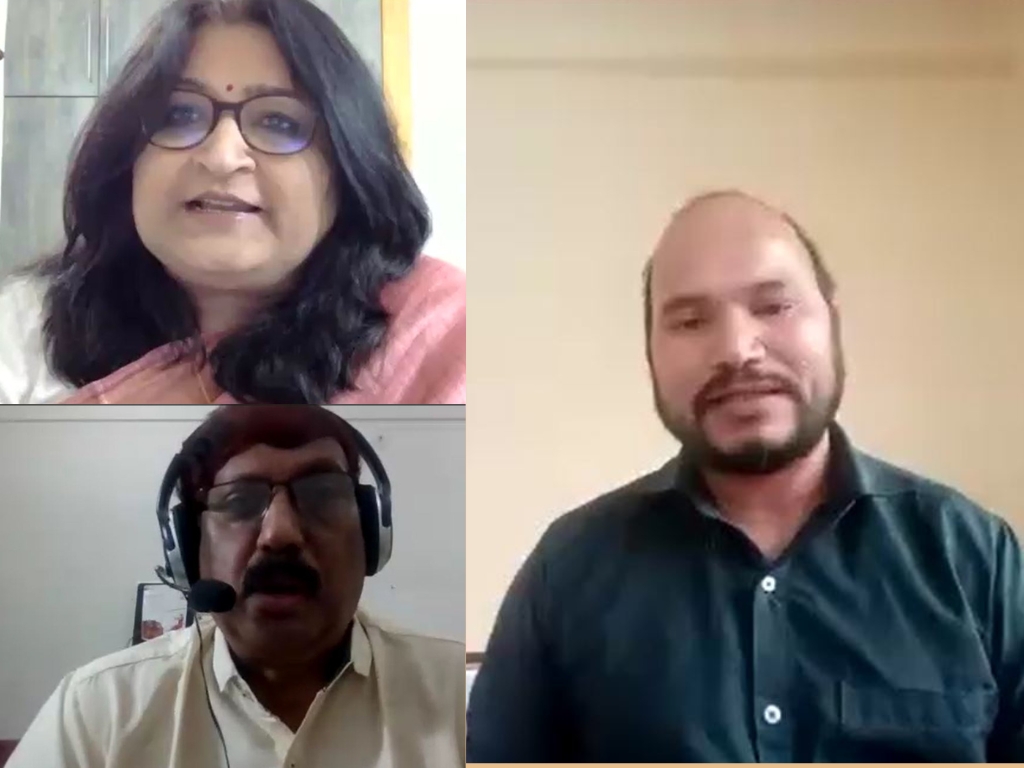
Mr. Murty concluded by saying that the synthesis of the three Yogas as demonstrated by Sri Krishna was a forerunner of the Integral Yoga of Sri Aurobindo who took this synthesis to its next stage of evolution through his own work in the 20th century.
A lively interaction for about 30 minutes followed the last talk. Several questions were taken up including our individual responsibility towards our nation, importance of sincerity, daily practices for elevating in consciousness, and the true meaning of development in the Indian spiritual context.
The webinar came to an end with a Hindi devotional song rendered by Biswajita Mahapatra, Design and Administrative Assistant with BhāratShakti. The programme lasted for more than 2 hours and several audience members appreciated the choice of topics and the overall flow of the event. Here are some sample feedback comments:
- Charan ji, you have perfectly stated and related factually Bharat’s situation after 80 years of political Independence
- Beloo ji, sense a flow and total downpour of the Yamuna River waters while you speak of Sri Krisha and Sri Aurobindo…it kind of reached us all the listeners here. Many thanks.
- Narendra ji, what an apt, mesmerizing narrative of the whole life span of Bhagwan Sri Krisha! It is indeed the Unique Satsang. Thank you.
- Three cheers to all the three speakers
- As always a treat to listen to all these speakers. Such powerful concepts in simple, easy flowing language.
- What a wonderful well planned and very well executed Satsang!
- We enjoyed a beautiful birthday evening of Sri Krishna and Sri Aurobindo through this webinar. Thanks!
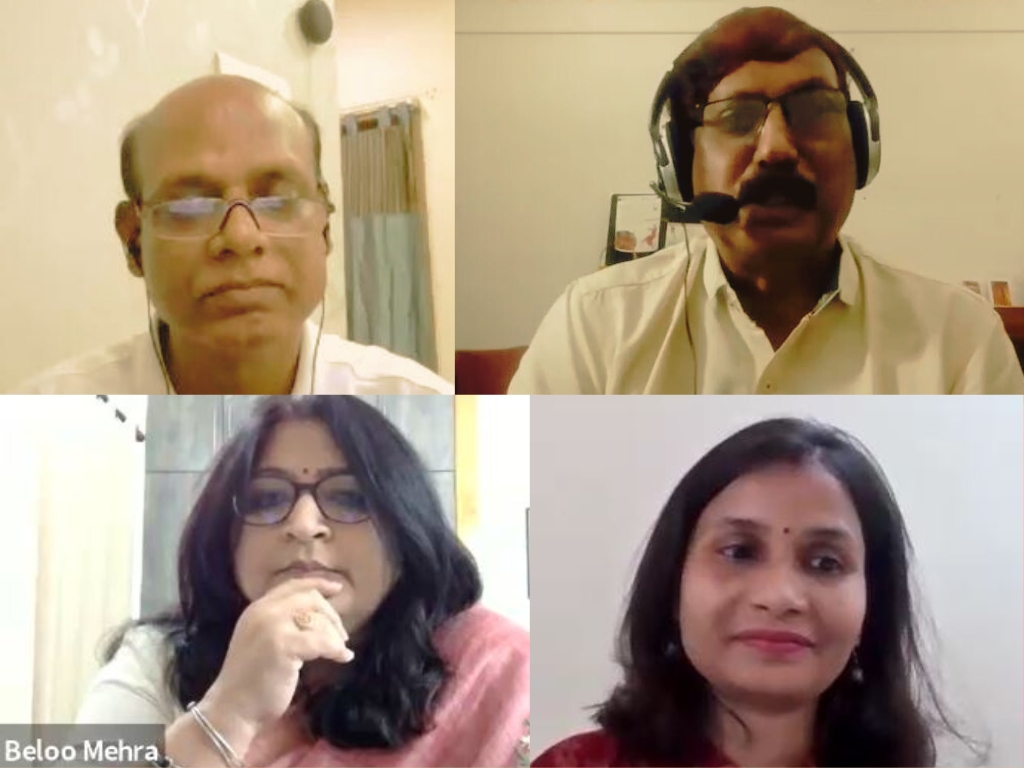
About the Speakers
Dr Charan Singh Kedarkhandi – poet, thinker and spiritual seeker, he lives and works in Jyotirmath, Uttarakhand. Widely respected as an authority on Sri Aurobindo’s poetry, yoga and philosophy, Dr. Kedarkhandi writes and speaks about the spiritual vision of the Mother and Sri Aurobindo. He is the founder member of Sri Aurobindo Study Centre, Jyotirmath.
Dr Beloo Mehra serves as Director of BhāratShakti, Sri Aurobindo Society and Editor, Renaissance. A former professor at an American university, she has now devoted herself to Sri Aurobindo Studies as a student, researcher, writer, educator, program designer and editor. Author of several books and articles on topics related to Integral Education, Indian culture, social-cultural evolution, and Integral yoga, she has also worked with university students in India and the US.
Narendra Murty is a Research Associate at BhāratShakti, Sri Aurobindo Society and writes regularly for Renaissance. Retired from a managerial position in the insurance industry, Narendra’s deep passion has been the study of various religions and philosophies — both Eastern and Western for more than 3 decades. He is an award-winning author of six books.
